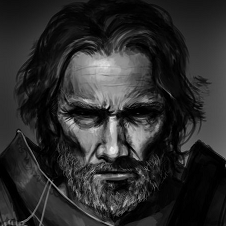-
Posts
37,788 -
Joined
-
Last visited
Content Type
Profiles
Forums
Events
Gallery
Everything posted by Ace-Garageguy
-
midnightprowler said: "Umm, Revell did not do a 41, AMT did. Revell has done a couple of 40's, neither a woodie, and a few 48's, the reagtop, the woodie, and the chopped one. AMT only did the woodie in stock and rodded form." end quote. Hey, you know what? I'm an IDIOT. I was so busy comparing the parts, I was too stupidly pre-occupied to look at the boxes and who made the damm things. Duh, duh, duh duh duh. And that's how mistakes get made. You caught me. Sure didn't take long to find that one. So, how do you suppose the approximately 1/32 scale engine ended up in AMT's last 1/25 issue of the Ala Kart? Wonder why nobody caught that. And I'm curious....does the chopped '48 use the same chassis tooling as the woody?
-

1972 Ranchero
Ace-Garageguy replied to TooOld's topic in WIP: Model Trucks: Pickups, Vans, SUVs, Light Commercial
Like it like it like it !!! You sure got that old Ford blue engine color right too. -
Skip, here's the flip side of that coin.....The '41 Ford is mechanically pretty much identical with the '48, chassis-wise at least. For some odd reason, the Revell '41 woody shares no tooling with Revell's '48 Woody. With all the endless carping about how expensive tooling is, who was driving the bus when it was decided to double the necessary tooling expenditure to get these two kits out? Every tree from the '41 could have been used in the '48 (or vice-versa), except for the main bodyshell.
-

What Revell should put out as Kits...
Ace-Garageguy replied to TheCat's topic in General Automotive Talk (Trucks and Cars)
A lot of Foose's work is truly spectacularly beautiful, and seems to me like a really good inspiration to crank up those scratch-building or customizing skills. -
I agree about the 'look' aspect. I'm still building AMT's vintage '32s, in spite of all the bad press about the proportions, because I like the general 'look' and have good memories of the kit in simpler times, but it IS on my list to measure a real 1:1 '32 roadster. I'm still not convinced the Revell version is right either. When the measuring and/or scaling is off by enough, it's impossible to get the desired 'look'.
-
Casey, I understand the dynamics of business and cost/benefit ratios and all the rest. I'm not talking about hair-splitting perfection. I'm talking about GROSS inaccuracies like AMT's tiny little just-plain-wrong Ala Kart engine, or the fact that of all the available '34 Fords, for instance, no two have the same length hood and NONE of them are correct. I'm very happy with the majority of the available kits. I simply don't understand sloppy measuring. It takes EXACTLY the same investment to manufacture a kit to CORRECT DIMENSIONS as it takes to manufacture exactly the same kit, with the same level of detail, to wrong ones. PS. If my 1:1 work was done to the same standards as these two, my client's doors wouldn't close, the hoods wouldn't fit, and the engines probably wouldn't run for long, if at all.
-
You're correct in thinking that 10" slicks may be overkill for such a small displacement engine. Only a dyno sheet showing torque and power curves could start to accurately determine a 'yes' or 'no', but it looks to me like the real car in the NHRA museum had 8s on it, and Micky Thompson didn't miss a trick. More tread width than is necessary to adequately hook up the available torque is a waste of energy, in increased weight and rotating mass of the tire. Rotating weight affects acceleration more than non-rotating weight. Mass at the periphery of a wheel affects acceleration twice as much as non-rotating mass does; that is true irrespective of wheel diameter. You can show this with the formulas for rotational kinematics, or (more simply) by noting that a point on the outside of a wheel has a tangential speed equal to the forward speed of the vehicle. Mass at the axis of a wheel has the same effect on acceleration as non-rotating mass. Mass partway between the axis and the outside of a wheel has an additional effect on acceleration in proportion to the square of (distance from axis) / (wheel radius). E.g., mass halfway between the axis and the edge of the wheel counts 125% as much as non-rotating mass; 125% = 1 + (0.5 squared). All this means is that slicks that are wider than necessary will actually make the car accelerate more slowly. Of course the whole point of drag racing is......to accelerate more QUICKLY than the other guy. So too-wide tires are dumb, and slow.
-
This may seem like beating a dead horse, but the other thread about the relative merits of 1/25 versus 1/24 misses the mark as to what's important in a model to me. I've tried to get some responses to this question over there, but I decided to spin it off and start fresh. I build in many scales, a variety of subjects, and all scales have equal attractions, depending on several variables. BUT, the SINGLE most important aspect of a particular model, to me, is how accurately it portrays its subject. I'm well versed in the technicalities of CAD, machining, pattern-making and tool-making, and industrial production. I know what's possible with current and 'obsolete' technology. What I don't understand is how 3 manufacturers can produce models of the same car (the 1934 Ford is my example), and though in 1:1 the hoods on ALL common production '34 Ford body styles are the same length, NO TWO models in the same scale are the same, and NONE ARE CORRECT. How can this be? To a guy who spends every day looking at 1:1 hot rods, the wonky proportions of these models really spoil the presence of a finished build that the 1:1 has. I first started to notice the 'scale drift' while doing a chopped '34 drag car, and though I had measurements of the actual chop on the 1:1. nothing I did could get the right look. I finally figured it out while looking at photos of my model, and realized the kit proportions I'd started with were wrong....by enough to spoil the look. That's when I set about measuring a real 1:1 '34 Ford 5-window we had in the shop, dividing by 25 and comparing the results. So answer me this : How can 3 teams of supposed 'professionals' measure the same car and get 3 different numbers? And nobody catches it before it goes to production? And do you give a damm if your '34 actually looks like a '34, or is 'sorta' close enough?
-
Umm hmm. I wonder where the line is between obviously horrible in-accuracy like the old Palmer kits and sort-of-okay stuff most people seem to be satisfied with. What percentage deviation from accuracy in a 'scale model' is allowable before something becomes just a 'toy'? And why do so few really care? I know the answer is going to be "this is supposed to be fun", or something similar, but to me it's NOT fun to open a kit, full of high hopes and anticipation for building something beautiful, only to be confronted by a mis-shapen blob that will take many hours to even get the proportions right. If I did my own job as poorly as some of the tool makers, I wouldn't be able to get work in my field, period. On the other hand, I really have to say that MOST of the kits I've purchased over the years have been completely satisfactory, possibly because I'm willing to do the extra required to 'get it right', or to simply modify the car so heavily that the little stock-proportion problems lose importance in the course of the build. But there are several that I've had for YEARS, and haven't been able to come up with even a reasonable idea of how to go about correcting the deficiencies. They'll probably never get built, so in that case, I've paid good money for absolutely nothing of value.
-
Yup, pretty cool.
-

'27 C Cab
Ace-Garageguy replied to Gluhead's topic in WIP: Model Trucks: Pickups, Vans, SUVs, Light Commercial
Looking really good. Nice proportions. Speaking of nice proportions, what is your avatar? It's got some good lines. -
Yup, looks great. Keep it coming.
-

Aston Martin DBR9 and Jaguar XKR GT3 - Airfix 1/32
Ace-Garageguy replied to Matt Bacon's topic in Model Cars
Beautiful job on all of them. -

Dick Oldfields - 1964 Superstock Dodge. The Iron Butterfly
Ace-Garageguy replied to gtx6970's topic in Model Cars
Love your Superstock Dodge lineup, and great looking job on the Flutterby. -
Yup.
-
Great Willys. Love that kit and love your build.
-
Yes, very beautiful. Fine work.
-
Man I LOVE '34s. That is just one beautiful hunk of metal, and no matter what you do to it, it looks good. Gotta build more '34s........
-

1/24 Monogram '30 Ford Model A 5-window Coupe
Ace-Garageguy replied to Bernard Kron's topic in Car Kit News & Reviews
I LIKE THAT !!! -
I'm kind of particular when it comes to 'scale' and 'proportion'. There's something sloppy going on there...look CAREFULLY (I know that's asking a lot for some folks...it's not fun to be careful) and notice please the difference in SHAPE of the windshield and back glass. That's NOT a SCALE issue. The shapes should be identical, just a little smaller in 1/25. Also, please to notice the SIZE of the back window. It's actually apparently SMALLER in 1/24 than in 1/25.....the opposite of what it SHOULD be. Imagine what other liberties have been taken by incompetent people doing a rather mediocre job of "scaling". If both models were tooled by COMPETENT PEOPLE, the proportions would be IDENTICAL. They clearly are not. I rest my case.
-
This one's built to drive (by the shop where I work most often). Fast and reliable. 350 Chevy crate, 3X2 Rochesters, 5-speed GM box, Ford 9" rear. '40 Ford juice brakes (repop). Comfortable once you're in it. 15 inch steering wheel. Top chopped 3.5 inches. Getting final plumbing now, going to paint shortly.
-
The grille shell is too high relative to the front cowl line.The radiator strut rods are climbing for the sky, towards the front. Not a good look in my opinion. Goofy, actually. Raise the front of the body shell or lower the rad shell. The body is hanging below the frame rails in front, and if it were parallel, the mis-match on the cowl-rad shell line would be better. You can also see the waves and lumps where the roof insert was filled...I think that's what I'm seeing, anyway. Ditch the silly steering wheel, ape-hanger shifter, automatic trans and too-too much cam and induction. (If you keep the overkill carb / manifold setup, maybe check the carb-base angle. It looks like it's down-in-front, and could possibly play jell with float level and idle / drivabliity) Set it up to DRIVE, not just make a lot of noise, with a chain-driven S.C.o.T. bolwer on a Y-block Ford, with a 5-speed. Now THAT would be cool. ......All that said, I still think it's a great looking car, and I'd definitely look more than twice at it at a show or in a mag. So close to perfect, but so far away.........
